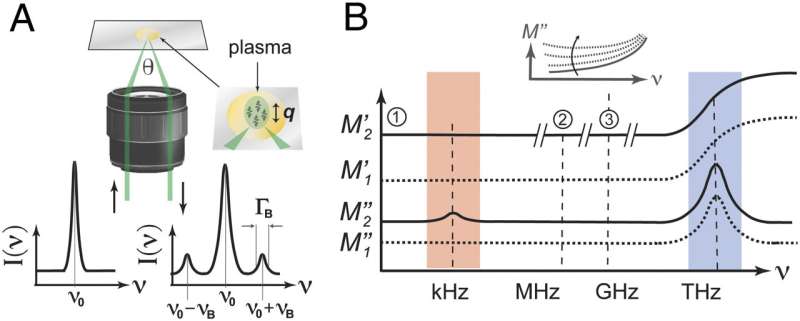This article has been reviewed according to Science X's editorial process and policies. Editors have highlighted the following attributes while ensuring the content's credibility:
fact-checked
peer-reviewed publication
trusted source
proofread
New optical method measures blood plasma viscosity to assess COVID-19 severity

A research team led by MedUni Vienna has shown in a study that purely optical measurements of the viscosity of blood plasma may provide information about the severity and progression of COVID-19.
The employed technique, Brillouin light scattering spectroscopy, can analyze the smallest amounts of plasma in less than a second, making it a promising method for monitoring severely ill patients. The research work was recently published in the Proceedings of the National Academy of Sciences.
It is well known in medical science that the viscosity of the liquid component of blood (plasma) can provide valuable information about various diseases. A research team led by Kareem Elsayad from MedUni Vienna's Center for Anatomy and Cell Biology has now shown that purely optical measurements are able to quickly detect this diagnostic marker.
The technique used in the study, known as Brillouin light scattering spectroscopy (BLS), uses light to obtain information about the viscosity of the plasma by analyzing the interactions of light with naturally occurring acoustic (hypersonic) waves in the sample.
Using this technique, the researchers found that there were significant differences in the measured viscosity and temperature dependence of the viscosity of blood samples from COVID-19 patients.
"The differences were particularly notable at temperatures above 38°C, and appear to be associated with changes in the physical properties of some of the constituents, that cause the liquid plasma as a whole to behave differently," reports Elsayad.
The pathological abnormalities observed in the blood plasma could lead to altered flow behavior in the smallest blood vessels and provide a possible explanation for complications up to and including multi-organ failure.

Rapid and precise assessment of severity
Measuring differences in the viscosity of blood plasma using BLS opens up a range of new possibilities. "Above all, our study results may help to quickly assess the severity of the disease when monitoring patients," says the study leader.
After all, BLS offers the advantage of being able to analyze small quantities of plasma (less than 100 microliters) very quickly (in less than a second). In addition, the insights gained could help in the development of targeted therapeutic measures and improve our understanding of COVID-19 and other diseases.
Further research is needed to test and optimize the method for clinical use. "We are already investigating whether BLS could also be useful for the prognosis of post-COVID syndrome and other diseases, while at the same time also working on better understanding the biophysical processes responsible for the unusual behavior we observe," says Elsayad. The study was conducted in collaboration with researchers from MedUni Vienna's Center for Virology and Klinik Favoriten.
More information: Jennifer Illibauer et al, Diagnostic potential of blood plasma longitudinal viscosity measured using Brillouin light scattering, Proceedings of the National Academy of Sciences (2024). DOI: 10.1073/pnas.2323016121


















